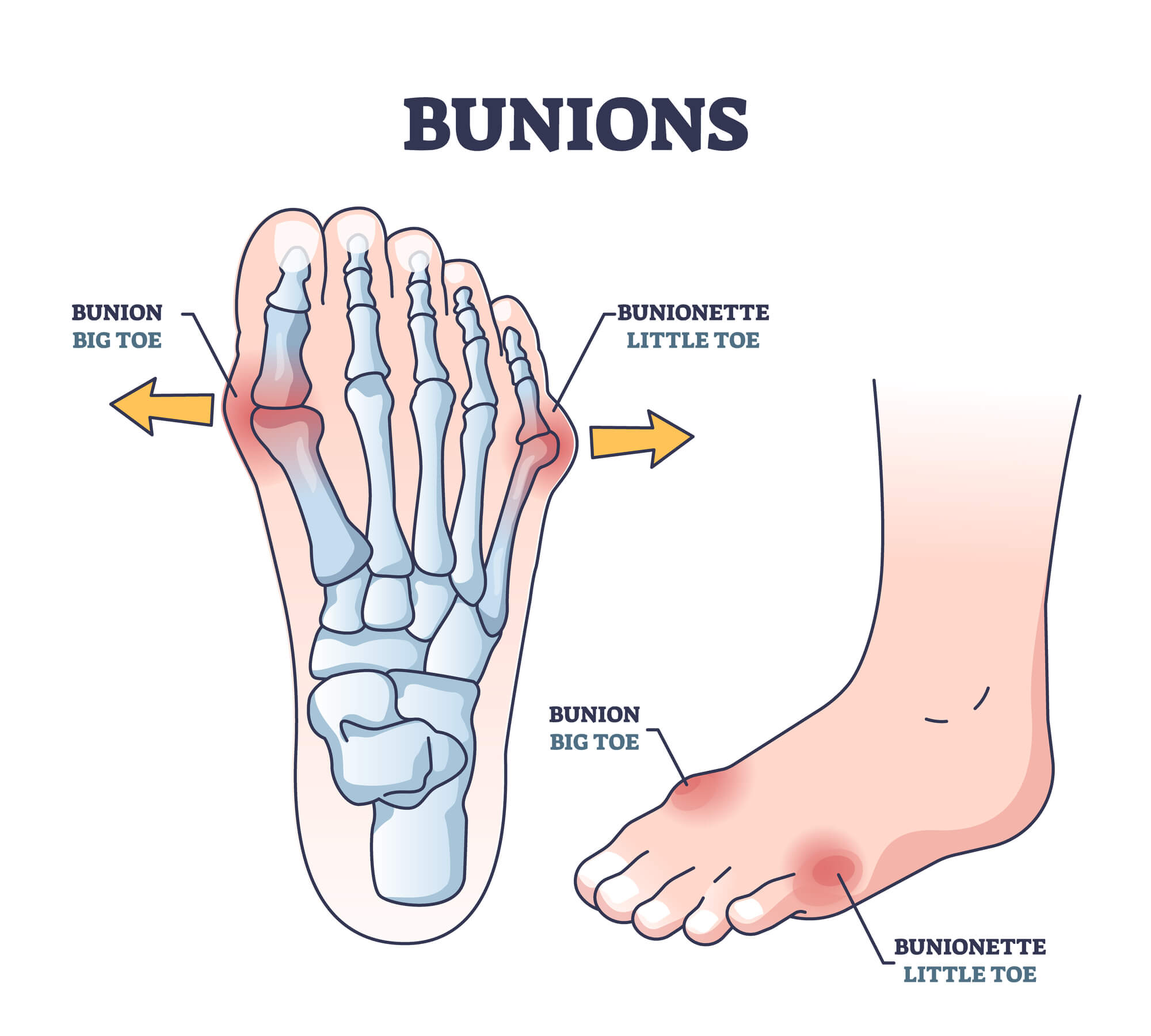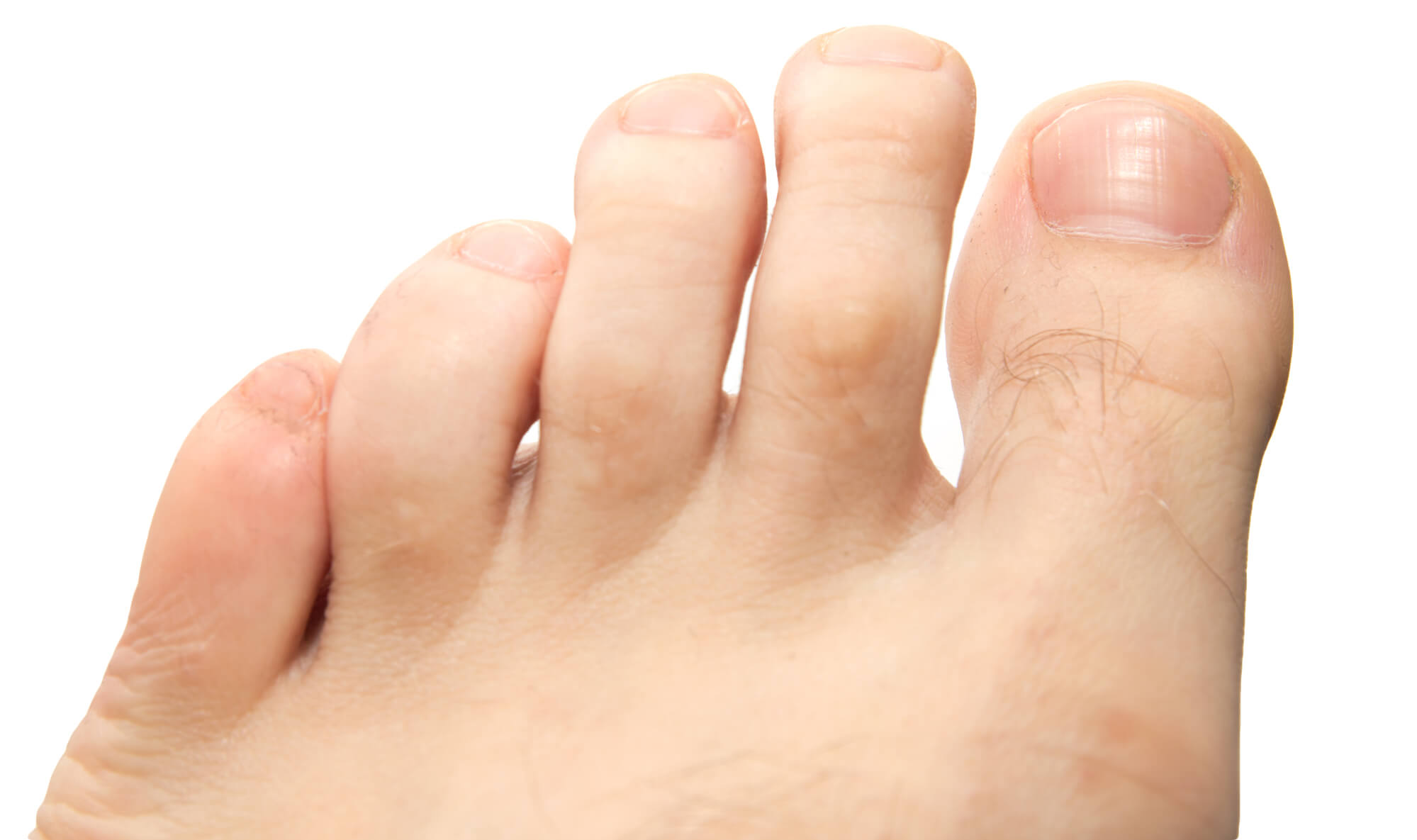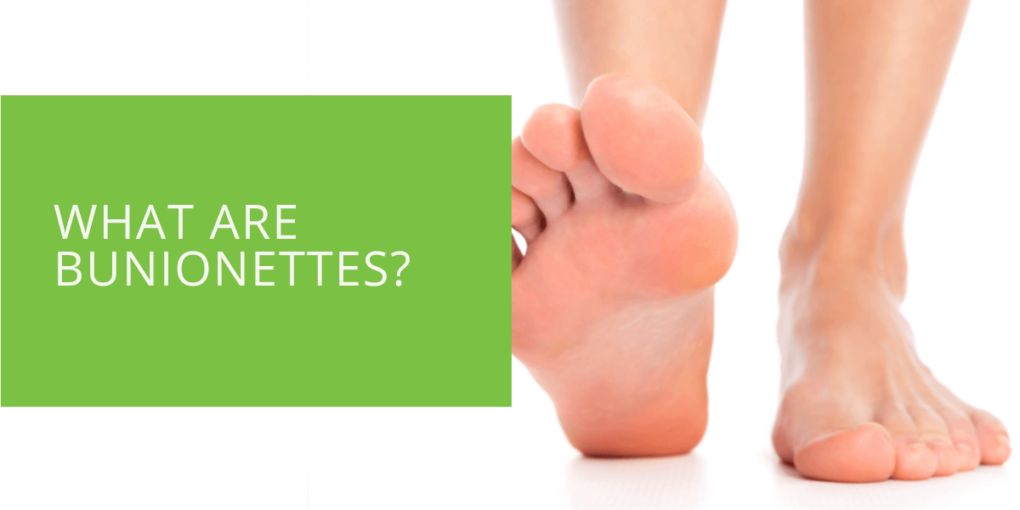What Are Bunionettes (Tailor’s Bunions)?
Bunionettes, also known as tailor's bunions, are common foot problems that can cause pain and discomfort. These small, bony protuberances occur outside the foot, usually near the little or fifth toe. Bunionettes are similar to bunions, which form on the inside of the foot near the big toe. However, while bunions often result from wearing tight or high-heeled shoes, bunionettes can be caused by various factors, including genetics, foot injuries, and even arthritis.
Suppose you're experiencing pain or discomfort on the outside of your foot. In that case, it's important to consult with a podiatrist or other foot and ankle specialist to determine whether you have a bunionette and, if so, what treatment options are available. This article will provide a detailed overview of bunionettes, including their causes, symptoms, diagnosis, and treatment options.
What are the Symptoms of Bunionettes?
Bunionettes can cause various symptoms, including pain, swelling, redness, and difficulty walking. These symptoms can range from mild to severe, depending on the severity and any underlying conditions contributing to its development.
- Pain: One of the most common symptoms is pain. This pain can range from a mild ache to severe discomfort, and it may be worse when standing or walking for long periods. The pain may also be more intense when wearing certain shoes, such as high heels or shoes with a narrow toe box.
- Swelling: Bunionettes can also cause swelling on the outside of the foot, near the little toe or fifth toe. This swelling may be accompanied by redness and tenderness to the touch.
- Redness: In some cases, may cause redness on the skin near the affected toe. This redness may be a sign of inflammation or irritation, and it may be accompanied by swelling and pain.
- Difficulty Walking: Bunionettes can also make it difficult to walk or stand for long periods. This may be due to the pain and discomfort caused by the bunionette, or it may result from the deformity, which can throw off your balance and gait.

What Causes Bunionettes?
Several factors can contribute to the development of bunionettes, including genetics, foot injuries, and even arthritis. Here's a closer look at some of the most common causes:
- Tight Shoes: One of the most common causes is tight, poorly fitting shoes. Shoes that are too tight or have a narrow toe box can squeeze the toes together, causing the bones and joints to become misaligned. This can lead to the formation, especially if the shoes are worn frequently or for long periods.
- Foot Injuries: Foot injuries, such as sprains or fractures, can also lead to the development. These injuries can damage the bones and joints in the foot, leading to deformities such as bunionettes.
- Arthritis: Arthritis is a common cause, especially in older adults. This degenerative joint disease can cause inflammation and damage to the joints in the foot, leading to the formation of.
- Genetics: Bunionettes can also be caused by genetics. If you have a family history of bunions or bunionettes, you may be more likely to develop these foot problems yourself.

How are Bunionettes Diagnosed and Treated?
If you think you may have a bunionette, it is important to consult with a podiatrist or other foot and ankle specialist to determine the cause of your symptoms and develop a treatment plan. Here's what you can expect during the diagnosis and treatment process:
Diagnosis
The first step in diagnosing a bunionette is to undergo a physical examination. The podiatrist will examine your foot and ask about your symptoms, medical history, and any underlying contributing conditions during this examination. They may also ask about your footwear and any activities causing or exacerbating your symptoms.
In addition to the physical examination, the podiatrist may also order imaging tests, such as x-rays, to better look at the bones and joints in your foot. These tests can help the podiatrist determine the severity and any underlying conditions contributing to its development.
Treatment
Once the bunionette has been diagnosed, the podiatrist will recommend a treatment plan based on the severity and your specific needs and preferences. Treatment options include both non-surgical and surgical options.
Non-Surgical Options
If the bunionette is mild or not causing significant discomfort, the podiatrist may recommend non-surgical treatment options, such as:
- Wearing comfortable, well-fitting shoes: Choosing shoes with a wide toe box and avoiding high heels can help alleviate pressure and reduce pain and discomfort.
- Taking breaks when standing or walking for long periods: Resting your feet and elevating them can help reduce swelling and inflammation.
- Using over-the-counter pain relievers: Nonsteroidal anti-inflammatory drugs (NSAIDs), such as ibuprofen or naproxen, can help reduce pain and inflammation.
- Using ice packs: Applying ice packs to the affected area can help reduce swelling and inflammation.
- Performing foot stretches and exercises: Stretching and strengthening the muscles in your foot can help improve your balance and gait, which can, in turn, help reduce the pain and discomfort caused.
Surgical Options
If the bunionette is severe or not responding to non-surgical treatment options, the podiatrist may recommend surgery to correct the deformity. There are several different types of bunion surgery, including:
- Osteotomy: During this procedure, the podiatrist will cut the bone near the bunionette and reposition it to a more normal alignment. The bone may be held in place with screws or other devices.
- Arthrodesis: During this procedure, the podiatrist will fuse the joint near the bunionette to correct the deformity.
- Excision: In some cases, the podiatrist may remove the bunionette and any excess bone or tissue causing pain or discomfort.
It's important to note that recovery from bunion surgery can take several weeks or even months, and it may be necessary to wear a special boot or use crutches to keep weight off the foot during recovery.

Preventing Bunionettes
While it may not be possible to completely prevent the development of bunionettes, you can take steps to reduce your risk. Here are some tips for preventing them:
- Wear comfortable, well-fitting shoes: Choosing shoes that fit well and provide ample room for your toes can help reduce the risk of developing bunionettes.
- Take breaks when standing or walking for long periods: Resting your feet and elevating them can help reduce the risk of developing bunionettes, especially if you stand or walk for long periods regularly.
- Maintain a healthy weight: Carrying extra weight can strain your feet, increasing the risk of developing bunionettes. Maintaining a healthy weight can help reduce this risk.
- Perform foot stretches and exercises: Stretching and strengthening the muscles in your feet can help improve your balance and gait, which can, in turn, help reduce the risk of developing bunionettes.
Conclusion
Bunionettes, or tailor's bunions, are common foot problems that cause pain and discomfort. These bony protuberances form on the outside of the foot, usually near the little toe or fifth toe, and can be caused by various factors, including genetics, foot injuries, and even arthritis. Suppose you're experiencing pain or discomfort on the outside of your foot. In that case, it's important to consult with a podiatrist or other foot and ankle specialist to determine whether you have a bunionette and, if so, what treatment options are available.
Treatment options include non-surgical and surgical options, and it's important to work with your podiatrist to determine the best treatment for your specific needs and preferences. While it may not be possible to completely prevent the development of bunionettes, you can take steps to reduce your risk, including wearing comfortable, well-fitting shoes, taking breaks when standing or walking for long periods, maintaining a healthy weight, and performing foot stretches and exercises.

